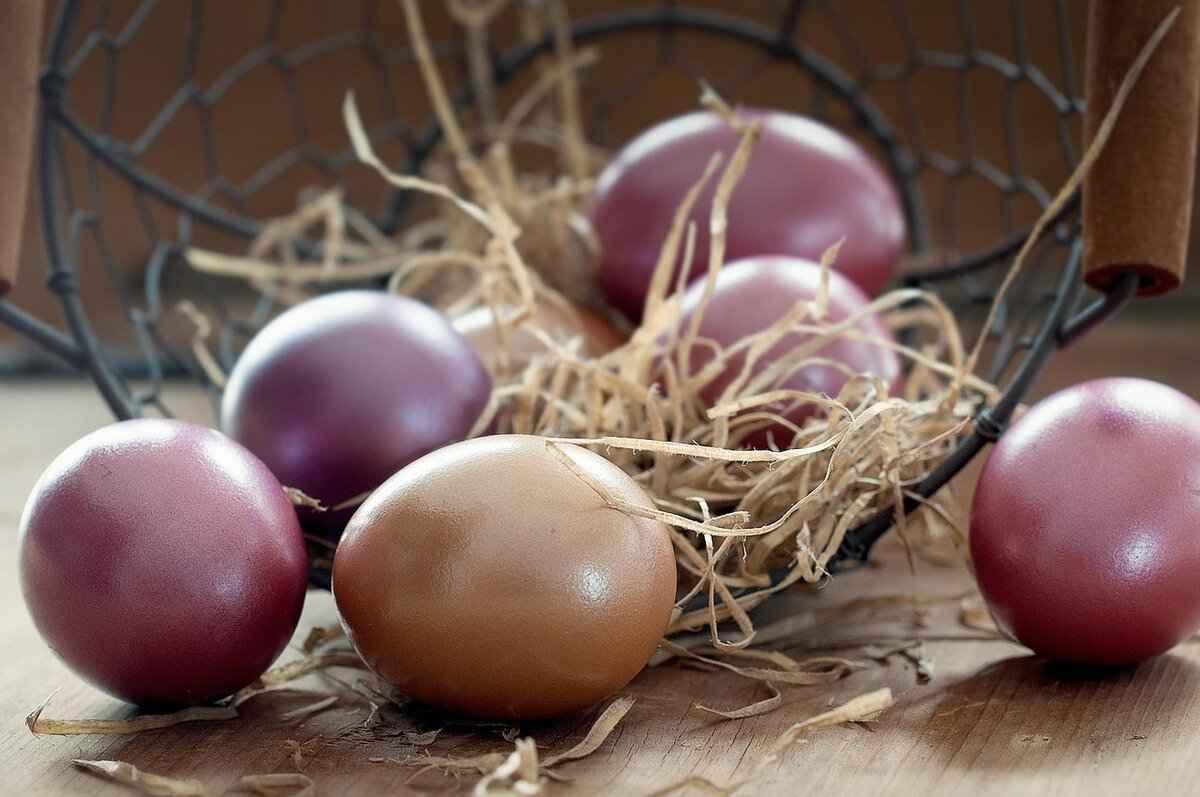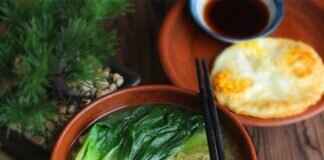Century eggs, often referred to as hundred-year eggs, are a unique and traditional delicacy that has captivated the palates of many around the world. This article delves into the intricate process of crafting these eggs, their rich cultural significance, and the reasons behind their enduring popularity. Join us as we unravel the fascinating world of century eggs and their culinary applications.
Century eggs are preserved duck, chicken, or quail eggs that undergo a remarkable transformation through a specific preservation process. Their distinctive dark green or black color, coupled with a translucent jelly-like texture, makes them a visual curiosity. The flavor profile is equally intriguing, with a creamy, savory taste that many find irresistible.
The creation of century eggs is an art form that involves a meticulous preservation method. The traditional process employs alkaline substances that alter the egg’s composition, resulting in a unique taste and texture.
The conventional method of preparing century eggs involves several steps:
- Coating the eggs in a mixture of clay, ash, and salt.
- Wrapping them in rice husks or straw.
- Burying them underground for several weeks to months.
This ancient practice has been passed down through generations, ensuring that the authentic flavors are preserved.
Key ingredients in the making of century eggs include:
- Quicklime – Essential for the alkaline environment needed for preservation.
- Salt – A natural preservative that enhances flavor.
- Tea – Sometimes added for additional flavor complexity.
Each ingredient plays a vital role in achieving the characteristic taste and texture of century eggs.
While traditional methods are still widely practiced, modern techniques have emerged that utilize chemical processes to expedite production. These contemporary methods can lead to variations in taste and texture, sometimes deviating from the authentic flavor profile cherished by enthusiasts.
Despite their unconventional appearance, century eggs are rich in nutrients. They are a great source of protein and contain essential vitamins and minerals. Understanding these health benefits can help demystify the delicacy and encourage more people to embrace it.
The allure of century eggs extends beyond their unique flavor. They hold significant cultural importance, often featured in traditional celebrations and meals. Their ability to enhance dishes makes them a favorite among chefs and home cooks alike.
Century eggs are incredibly versatile, finding their way into a variety of dishes:
- Congee – A popular rice porridge where century eggs add depth and richness.
- Salads – Sliced century eggs can elevate a simple salad with their unique flavor.
- Stir-fries – They can be incorporated into various stir-fried dishes, adding a savory kick.
In recent years, century eggs have gained traction in popular culture, frequently appearing in food blogs, cooking shows, and social media platforms. This exposure has contributed to a resurgence in interest, attracting new fans curious about this traditional delicacy.
In summary, century eggs represent more than just a unique culinary experience; they embody a rich cultural heritage and offer numerous health benefits. Their distinctive flavor profile and versatility in cooking ensure they remain a beloved delicacy for generations to come.

What Are Century Eggs?
Century eggs, also referred to as hundred-year eggs, are a remarkable traditional delicacy originating from China. These preserved eggs, typically made from duck, chicken, or quail eggs, have captivated the taste buds of many due to their unique flavor profile and intriguing appearance. Their dark, translucent exterior and creamy, greenish yolk create a striking contrast that often sparks curiosity among those unfamiliar with them.
Century eggs are not actually a century old; rather, they undergo a unique preservation process that gives them their distinctive taste and texture. The eggs are transformed through a method that involves alkaline substances, resulting in a rich, savory flavor that is both bold and complex. This delicacy is deeply embedded in Chinese culture and is often featured in various traditional dishes, making it a staple in many households.
The intriguing process of making century eggs begins with the careful selection of fresh eggs. The traditional method involves coating the eggs in a mixture of clay, ash, salt, and quicklime. This coating serves as a protective layer, allowing the eggs to undergo a slow aging process. The eggs are then buried for several weeks, during which time the alkaline environment alters their composition, resulting in the characteristic flavor and texture that fans adore.
- Quicklime: This is a key ingredient that helps create the alkaline environment necessary for the preservation process.
- Salt: Essential for flavor enhancement and preservation.
- Tea: Often added to the mixture, it contributes to the unique aroma and taste of the finished product.
While the traditional method remains popular, modern techniques have emerged that utilize chemical processes to expedite production. These contemporary methods can influence the final taste and texture, leading to a variation in quality. However, many purists believe that the traditional approach yields the most authentic century eggs, preserving the rich heritage of this culinary art.
Despite their unusual appearance, century eggs offer a range of health benefits. They are high in protein and contain essential nutrients such as vitamins A and B, iron, and calcium. The preservation process can also enhance the digestibility of the eggs, making them a nutritious addition to a balanced diet. Understanding these benefits can help dispel misconceptions about century eggs and encourage more people to try this unique delicacy.
The appeal of century eggs extends beyond their flavor; they hold significant cultural importance and are often featured in festive meals and celebrations. Their distinctive taste can elevate dishes, making them a favorite among culinary enthusiasts. Century eggs are often used in a variety of recipes, from congee to salads, where they add a rich umami flavor that enhances the overall dining experience.
In recent years, century eggs have gained popularity beyond traditional Chinese cuisine, appearing in food blogs, cooking shows, and social media posts. This exposure has sparked interest among food lovers worldwide, leading to creative culinary experiments and fusion dishes that incorporate century eggs. As more people discover their unique flavor, century eggs continue to bridge cultural gaps and introduce new audiences to this intriguing delicacy.

How Are Century Eggs Made?
Century eggs, also known as hundred-year eggs, are a remarkable culinary delicacy with a rich history in Chinese cuisine. The unique preservation process used in their production not only transforms the eggs but also creates a flavor profile that many find irresistible. This article delves into the intricate methods behind making century eggs, exploring both traditional and modern techniques.
The production of century eggs involves a fascinating preservation process that utilizes alkaline substances. This method significantly alters the egg’s texture and flavor, resulting in a product that is both intriguing and delicious. The transformation begins with the selection of fresh eggs, typically duck, chicken, or quail, which are then subjected to a meticulous process.
In the traditional method, the eggs are coated in a mixture of clay, ash, and salt. This mixture may also include other ingredients such as rice hulls and quicklime, which play a crucial role in the preservation process. After coating, the eggs are carefully wrapped and buried in a cool, dark place for several weeks to months. During this time, the alkaline environment alters the proteins and fats in the egg, leading to a distinctive texture and flavor.
The primary ingredients for making century eggs include:
- Quicklime: This is a key alkaline agent that initiates the chemical reactions necessary for preservation.
- Salt: Essential for flavor and as a preservative, salt helps to inhibit the growth of bacteria.
- Tea: Sometimes added for flavor, tea can enhance the overall taste profile of the century egg.
Each component plays a vital role in developing the egg’s unique characteristics, ensuring that the final product is both flavorful and safe to consume.
While traditional methods remain popular, modern variations have emerged. Some producers now employ chemical processes to expedite production, significantly reducing the aging time from months to just a few days. Although these methods can yield century eggs more quickly, they may alter the flavor and texture, leading to a product that some purists argue lacks the authenticity of traditionally made century eggs.
Despite their unusual appearance, century eggs are packed with health benefits. They are high in protein and contain essential nutrients, making them a nutritious addition to various dishes. Additionally, the preservation process can enhance certain health properties, such as improving digestion due to the fermentation involved. Understanding these benefits can help dispel myths surrounding this unique delicacy.
The appeal of century eggs goes beyond their unique flavor profile; they hold significant cultural importance and are often featured in traditional dishes. Their distinct taste can enhance a variety of recipes, making them a favorite among culinary enthusiasts. Whether served as part of a congee, in salads, or as a standalone delicacy, century eggs bring a unique element to the dining experience.
Century eggs are versatile ingredients that can be incorporated into numerous dishes. They are commonly used in:
- Congee: A traditional rice porridge where the creamy texture of century eggs complements the dish perfectly.
- Salads: Sliced century eggs add a unique flavor and visual appeal to salads.
- Stir-fries: When added to stir-fried dishes, century eggs provide a rich, savory taste that enhances the overall flavor.
With their rich flavor and unique texture, century eggs have become a sought-after component in Asian cuisine, appealing to both traditionalists and modern food enthusiasts alike.
In addition to their culinary uses, century eggs have gained popularity in modern culture, often featured in food blogs and social media. This exposure has contributed to a growing appreciation for this unique delicacy worldwide, encouraging more people to explore its rich flavors and cultural significance.
The Traditional Process
Century eggs, also known as hundred-year eggs, are a unique delicacy that has captivated the taste buds of many across the globe. The traditional process of making these eggs is steeped in history and culture, offering a glimpse into culinary practices that have stood the test of time. In this section, we will delve into the intricate details of the traditional method used to create century eggs, exploring its ingredients, techniques, and the reasons behind its enduring popularity.
The traditional method for producing century eggs involves a meticulous process that combines natural ingredients to achieve the desired flavor and texture. This age-old technique has been passed down through generations, ensuring that the essence of century eggs remains intact.
The primary components used in the traditional preparation of century eggs include:
- Clay: This serves as the main coating for the eggs, providing a protective layer during the curing process.
- Ash: Typically derived from wood or rice husks, ash helps to create an alkaline environment that is essential for the preservation of the eggs.
- Salt: Salt not only enhances flavor but also acts as a preservative, drawing out moisture and preventing spoilage.
- Quicklime: This alkaline substance plays a crucial role in transforming the egg’s protein structure, resulting in the iconic jelly-like texture.
- Tea: Sometimes, tea leaves are added to infuse a subtle flavor into the eggs.
The traditional process begins with selecting fresh duck, chicken, or quail eggs. Once selected, the eggs are thoroughly cleaned and dried. The next steps include:
1. Preparing the coating mixture by combining clay, ash, salt, and quicklime in specific proportions.2. Coating each egg evenly with the mixture, ensuring that no part is left exposed.3. Placing the coated eggs in a container or burying them in a cool, dark place.4. Allowing the eggs to cure for several weeks, typically ranging from 4 to 12 weeks, depending on the desired flavor intensity.5. After the curing period, the eggs are removed, cleaned, and are ready for consumption.
The traditional method of making century eggs is cherished for several reasons:
- Authenticity: Many culinary enthusiasts believe that the traditional method produces the most authentic flavor and texture.
- Cultural Significance: Century eggs hold a special place in various Asian cuisines and are often served during festive occasions, symbolizing prosperity and longevity.
- Natural Ingredients: The use of natural ingredients appeals to those who prefer traditional cooking methods over modern chemical processes.
The traditional method not only preserves the eggs but also transforms their flavor profile. The resulting century eggs have a rich, savory taste with earthy undertones and a creamy texture that many find irresistible. This unique flavor makes them a versatile ingredient in numerous dishes, ranging from congee to salads.
In summary, the traditional process of making century eggs is a fascinating blend of art and science, showcasing the culinary heritage of various cultures. By understanding this method, we can appreciate the depth of flavor and significance that century eggs bring to the table.
Ingredients Used in Production
The creation of century eggs relies on a few essential ingredients that are fundamental to the preservation process. These ingredients not only contribute to the egg’s unique flavor and texture but also play a vital role in ensuring the quality of the final product. Below are the primary components involved in making century eggs:
- Quicklime: Also known as calcium oxide, quicklime is a crucial ingredient in the preservation process. When mixed with water, it forms calcium hydroxide, creating an alkaline environment. This high pH level is essential for the transformation of the egg’s proteins and fats, leading to the distinctive texture and flavor that century eggs are known for.
- Salt: Salt serves multiple purposes in the century egg-making process. It acts as a preservative, helping to inhibit the growth of bacteria and other microorganisms that could spoil the eggs. Additionally, salt enhances the flavor of the eggs, contributing to their savory profile. The right balance of salt is crucial to ensure that the eggs are neither too salty nor bland.
- Tea: Traditionally, black tea or green tea is used in the century egg-making process. The tea adds a subtle flavor and dark color to the egg, enhancing its visual appeal. The tannins in tea also contribute to the preservation process, working alongside the other ingredients to create a complex flavor profile.
- Clay and Ash: In many traditional recipes, a mixture of clay and ash is used to coat the eggs. This not only provides an additional layer of protection during the aging process but also helps to retain moisture. The clay can impart earthy flavors, while the ash can enhance the overall texture of the egg.
- Rice Hulls: Sometimes, rice hulls are added to the mixture for coating the eggs. They help to create a breathable layer that allows for better air circulation during the aging process. This can result in a more evenly aged egg with improved flavor and texture.
Each of these ingredients plays a significant role in achieving the characteristic qualities of century eggs. The careful balance and interaction of these components are what make this delicacy so unique and beloved in various cultures. Understanding the function of each ingredient can also provide insights into the culinary versatility of century eggs, as they can be incorporated into a range of dishes from salads to congee.
Moreover, the traditional methods of making century eggs have been passed down through generations, emphasizing the cultural significance of these ingredients. While modern techniques may introduce variations, the core ingredients remain largely unchanged, highlighting the importance of tradition in culinary practices.
In conclusion, the ingredients used in the production of century eggs are not merely functional; they contribute to the rich history and cultural significance of this unique delicacy. By appreciating the role of quicklime, salt, tea, and other components, one can gain a deeper understanding of why century eggs are celebrated in various cuisines around the world.
Modern Variations in Making Century Eggs
As the culinary world evolves, so do the methods of preparing traditional delicacies like century eggs. While the traditional methods remain popular, modern variations have emerged, incorporating chemical processes that aim to shorten production times. But how do these modern techniques compare to traditional ones, and what impact do they have on the final product?
The classic method of making century eggs involves a meticulous process where eggs are coated with a mixture of clay, ash, and salt, then buried for several weeks. This ancient practice not only preserves the eggs but also transforms their flavor and texture, resulting in the unique taste that many have come to love. However, with the increasing demand for century eggs, producers are exploring quicker alternatives.
Modern techniques often include the use of alkaline chemicals such as sodium hydroxide or calcium hydroxide. These substances can speed up the aging process significantly, allowing producers to create century eggs in a matter of days rather than weeks. While this might seem advantageous, there are potential drawbacks. The use of chemicals can alter the taste profile and texture of the eggs, leading to a product that may not align with the authentic culinary experience.
For instance, eggs produced using traditional methods tend to have a more complex flavor, often described as earthy and rich, with a creamy texture. In contrast, chemically processed century eggs might have a sharper taste and a firmer texture, which some consumers may find less appealing. This variation can lead to differing opinions among enthusiasts about what constitutes a “true” century egg.
Another critical factor to consider is the safety of these chemical processes. While traditional methods have been used for centuries and are generally regarded as safe, the introduction of modern chemicals raises questions about food safety and health. It’s essential for consumers to be aware of the production methods of the century eggs they purchase and to choose products that prioritize quality and safety.
Furthermore, modern variations can also impact the nutritional value of century eggs. Traditional methods may enhance certain nutrients during the aging process, while chemical methods could potentially diminish these benefits. For those seeking the health advantages of century eggs, understanding the differences in production methods is crucial.
In summary, while modern variations in making century eggs offer faster production times, they come with trade-offs that can affect taste, texture, and safety. As consumers become more discerning, it’s vital to appreciate the artistry and tradition behind century eggs. Whether one prefers the time-honored methods or the convenience of modern techniques, the choice ultimately reflects personal preference and culinary values.
Health Benefits of Century Eggs
Century eggs, often considered a delicacy in various Asian cuisines, are not just unique in appearance but also rich in nutritional value. Many people are unaware of the numerous health benefits these eggs provide, which can help dispel the myths surrounding this intriguing food item.
- High Protein Content: Century eggs are a great source of protein, essential for muscle growth and repair.
- Vitamins and Minerals: These eggs contain vital vitamins such as B vitamins, which are important for energy metabolism, and minerals like calcium and iron.
- Healthy Fats: Century eggs possess healthy fats that can contribute to overall heart health when consumed in moderation.
Century eggs are often praised for their probiotic properties. The fermentation process involved in making these eggs can promote gut health by enhancing the growth of beneficial bacteria. This can lead to improved digestion and nutrient absorption.
Due to their high protein and low carbohydrate content, century eggs can be a great addition to a weight management plan. Protein helps to increase satiety, which can reduce overall calorie intake. Incorporating century eggs into meals can help keep you feeling full longer.
The presence of omega-3 fatty acids in century eggs is beneficial for brain health. These healthy fats are known to support cognitive function and may help in reducing the risk of neurodegenerative diseases.
Incorporating century eggs into a balanced diet can provide a variety of health benefits. They can be used in salads, stir-fries, or even as a topping for rice dishes. When consumed in moderation, they can add flavor and nutrition without excessive calories.
While century eggs are generally safe for most people, it’s essential to consider a few factors:
- Moderation is Key: Due to their sodium content, it’s advisable to consume them in moderation, especially for individuals with hypertension.
- Allergies: Some people may have allergies to eggs; thus, caution is advised for first-time consumers.
In conclusion, century eggs are not only a unique culinary delight but also a source of numerous health benefits. Their rich nutrient profile, combined with their versatility in cooking, makes them a valuable addition to a healthy diet. Understanding these benefits can help consumers appreciate this delicacy even more.

Why Do People Love Century Eggs?
Century eggs, known for their distinctive appearance and flavor, have garnered a dedicated following among food enthusiasts and cultural connoisseurs alike. But what is it about these preserved delicacies that captivates so many? In this section, we delve deeper into the reasons behind the love for century eggs.
One of the primary factors contributing to the popularity of century eggs is their distinctive flavor profile. The preservation process alters the egg’s taste, resulting in a rich, savory flavor that is both bold and complex. This unique taste makes them a versatile ingredient in various dishes, from soups to salads. Their ability to complement other ingredients enhances the overall culinary experience, making them a favorite among chefs and home cooks.
Beyond their flavor, century eggs hold a significant place in many Asian cultures, particularly in China, where they are often served during special occasions and celebrations. They are considered a symbol of longevity and prosperity, making them a popular choice for festive meals. The cultural importance attached to century eggs adds a layer of appreciation, as they are often associated with cherished traditions and family gatherings.
- Congee: Century eggs are commonly used in congee, a traditional rice porridge that is both comforting and nourishing.
- Salads: They can be sliced and added to salads, providing a unique texture and flavor contrast.
- Stir-fries: Century eggs can enhance stir-fried dishes, adding depth to flavors.
The versatility of century eggs allows them to be incorporated into various recipes, making them a must-try ingredient for culinary enthusiasts.
Despite their unusual appearance, century eggs are packed with nutritional benefits. They are rich in protein, vitamins, and minerals, which can contribute to a balanced diet. Additionally, they are low in calories, making them a guilt-free indulgence. Understanding these health benefits can help dispel misconceptions surrounding this delicacy.
In recent years, century eggs have gained traction in modern cuisine, with chefs experimenting to create innovative dishes that showcase their unique qualities. This trend has led to a resurgence of interest in century eggs, as they are featured in gourmet recipes and contemporary dining experiences. Their presence on social media platforms and food blogs has further amplified their appeal, introducing them to a broader audience.
The globalization of culinary practices has played a significant role in the rising popularity of century eggs outside their traditional regions. As people become more adventurous eaters, they seek out unique ingredients that offer new flavors and experiences. Century eggs fit this bill perfectly, appealing to those looking to explore diverse culinary traditions.
In conclusion, the love for century eggs can be attributed to their unique flavor, cultural significance, culinary versatility, and nutritional benefits. As they continue to gain popularity across the globe, century eggs are poised to remain a beloved delicacy for generations to come.
Culinary Uses of Century Eggs
Century eggs, also known as hundred-year eggs, are not just a culinary curiosity; they are a versatile ingredient that can enhance a wide variety of dishes. Their unique flavor and texture make them a favored component in many Asian cuisines, particularly in Chinese, Taiwanese, and even some Southeast Asian dishes. Let’s explore the various ways century eggs can be used in cooking.
- Congee: One of the most popular dishes featuring century eggs is congee, a comforting rice porridge. The rich, creamy texture of the eggs complements the smoothness of the congee, adding a savory depth that elevates this simple dish.
- Salads: Century eggs can be sliced and added to salads, such as the traditional Chinese Century Egg and Tofu Salad. The contrasting textures of the silky tofu and the firm century egg create a delightful culinary experience.
- Stir-fries: Incorporating century eggs into stir-fried dishes can enhance flavors. They can be diced and tossed with vegetables and proteins, adding a unique umami flavor that pairs well with soy sauce and garlic.
- Dim Sum: Century eggs are often featured in dim sum dishes, such as steamed buns or turnip cakes. Their distinct taste complements the savory elements of these traditional snacks.
- Soups: Adding century eggs to soups, such as hot and sour soup, provides a delightful contrast to the broth’s heat and acidity, enriching the overall flavor profile.
Why Are Century Eggs So Loved in Culinary Traditions?
The love for century eggs extends beyond their taste. They carry significant cultural weight, often being associated with celebrations and traditional meals. The preparation of century eggs is steeped in history, and they are often served during special occasions, making them a symbol of festivity and heritage.
How to Prepare Century Eggs for Cooking?
When incorporating century eggs into your dishes, it’s essential to prepare them properly. Start by peeling the eggs carefully to avoid damaging the delicate texture. Slice them into wedges or cubes, depending on your dish. For salads, a simple dressing of soy sauce, sesame oil, and a sprinkle of scallions can enhance the flavors even further.
Pairing Century Eggs with Other Ingredients
Century eggs pair beautifully with various ingredients. They complement the flavors of ginger, scallions, and soy sauce. Additionally, their rich taste balances well with the freshness of vegetables like cucumbers and radishes. Experimenting with flavors can lead to exciting new dishes that highlight the unique qualities of century eggs.
Century Eggs in Modern Cuisine
In recent years, chefs have begun to experiment with century eggs in contemporary dishes, showcasing their versatility. From gourmet appetizers to fusion cuisine, century eggs are being reimagined in innovative ways. Their unique flavor profile lends itself to creative culinary exploration, making them a favorite among food enthusiasts and chefs alike.
In conclusion, century eggs are much more than a traditional delicacy; they are a versatile ingredient that can elevate a wide range of dishes. By understanding their culinary uses and how to incorporate them into meals, you can appreciate the rich flavors and textures they bring to the table.
Century Eggs in Popular Culture
Century eggs, also known as hundred-year eggs, are not only a culinary delight but have also carved out a significant niche in popular culture. Their unique appearance and flavor have led to a surge in interest, particularly through the medium of social media and food blogs.
The rise of food blogging has played a pivotal role in the popularization of century eggs. Influencers and food enthusiasts share their culinary experiences, often showcasing these intriguing eggs in visually stunning dishes. This exposure has sparked curiosity among food lovers worldwide, prompting many to experiment with century eggs in their own kitchens.
- Visual Appeal: The striking appearance of century eggs, with their dark green yolks and translucent blackish-brown whites, makes them a perfect subject for Instagram and TikTok.
- Unique Flavor Profiles: Many food bloggers emphasize the bold flavors of century eggs, describing them as an acquired taste that adds depth to various dishes.
- Fusion Cuisine: Creative chefs are incorporating century eggs into modern recipes, blending traditional Asian flavors with contemporary cooking techniques, which further garners attention on social platforms.
The reactions to century eggs shared online can be quite polarized. While some users express fascination and love for this delicacy, others are put off by its unconventional appearance and flavor. This polarization often leads to lively discussions in the comments, where culinary enthusiasts share their experiences and tips for preparing century eggs.
Food blogs serve as a vital platform for educating readers about century eggs. Many bloggers delve into the history and cultural significance of this delicacy, providing valuable context that enhances appreciation. They often include:
- Recipes: Detailed instructions on how to incorporate century eggs into various dishes.
- Health Benefits: Information on the nutritional advantages of consuming century eggs, which can help dispel myths.
- Personal Stories: Anecdotes about trying century eggs for the first time, which resonate with readers and encourage them to explore this unique food.
As more people discover century eggs through social media, their popularity is expanding beyond traditional Asian cuisine. Restaurants in various parts of the world are beginning to feature them on their menus, often in fusion dishes that appeal to a broader audience. This trend indicates a growing acceptance and curiosity towards diverse culinary traditions.
With the continuous evolution of food trends and the increasing influence of social media, century eggs are likely to maintain their place in the culinary spotlight. As chefs and food enthusiasts alike experiment with this ingredient, we can expect to see innovative dishes that honor the traditional while appealing to modern palates.
In summary, century eggs are not just a traditional delicacy; they have become a symbol of culinary exploration and cultural exchange in today’s food landscape. Their presence in popular culture is a testament to the evolving nature of food appreciation and the power of social media in shaping culinary trends.
Frequently Asked Questions
- What exactly are century eggs?
Century eggs, also known as hundred-year eggs, are a traditional Chinese delicacy made from preserved duck, chicken, or quail eggs. Their unique dark color and strong flavor make them a fascinating addition to various dishes.
- How are century eggs made?
The process involves coating eggs in a mixture of clay, ash, and salt, then burying them for several weeks. This ancient method transforms the eggs, giving them their distinctive taste and texture.
- Are there any health benefits to eating century eggs?
Yes! Century eggs are rich in protein and contain essential nutrients. They can be a nutritious addition to your diet, despite their unique appearance.
- Why do people love century eggs so much?
Beyond their unique flavor, century eggs hold cultural significance and are often featured in traditional dishes. Their ability to enhance recipes makes them a favorite among food lovers.
- Can century eggs be used in various dishes?
Absolutely! Century eggs are versatile and can be used in dishes like congee, salads, and even as a topping for rice. Their rich flavor adds depth to many recipes.














